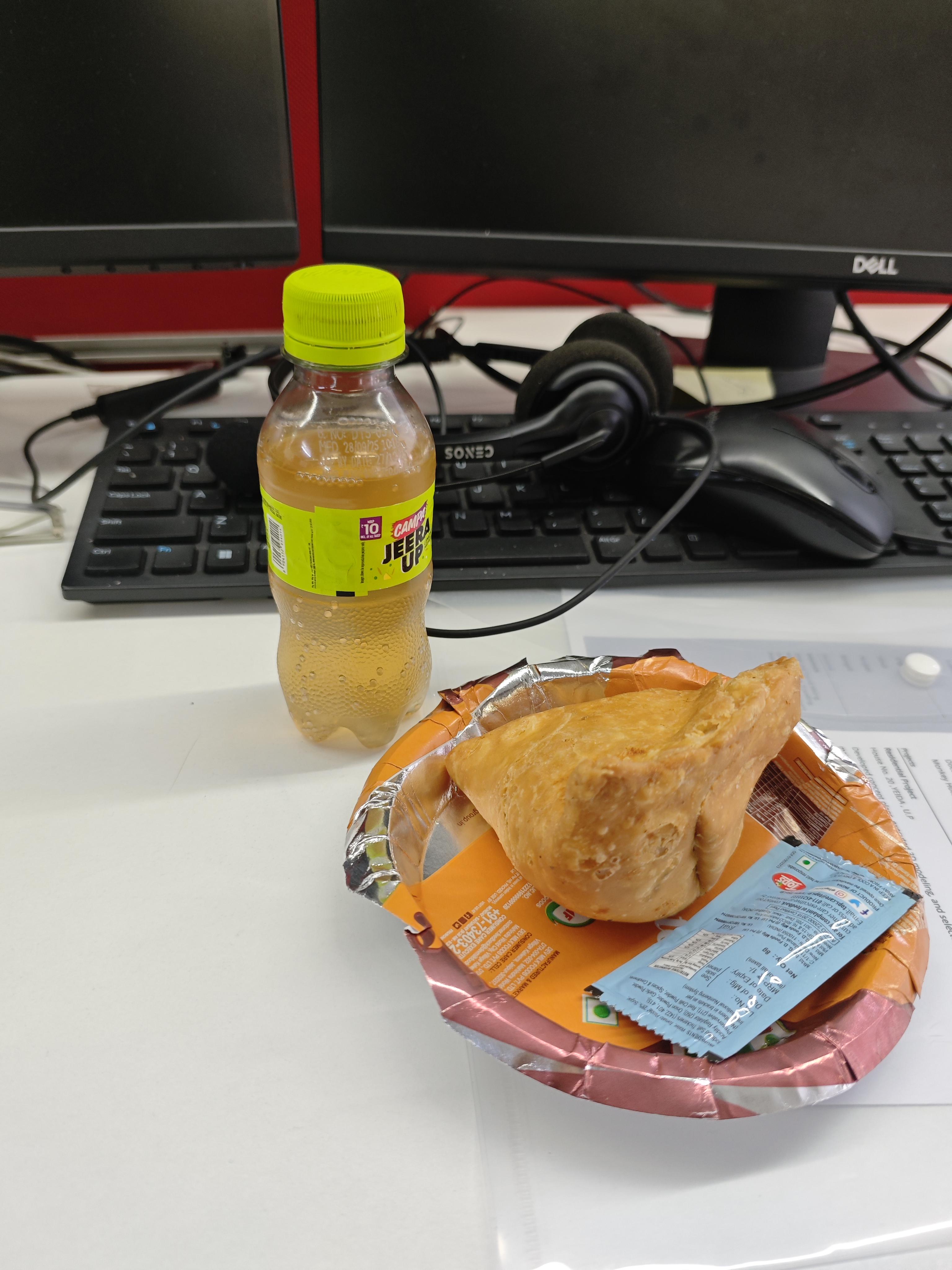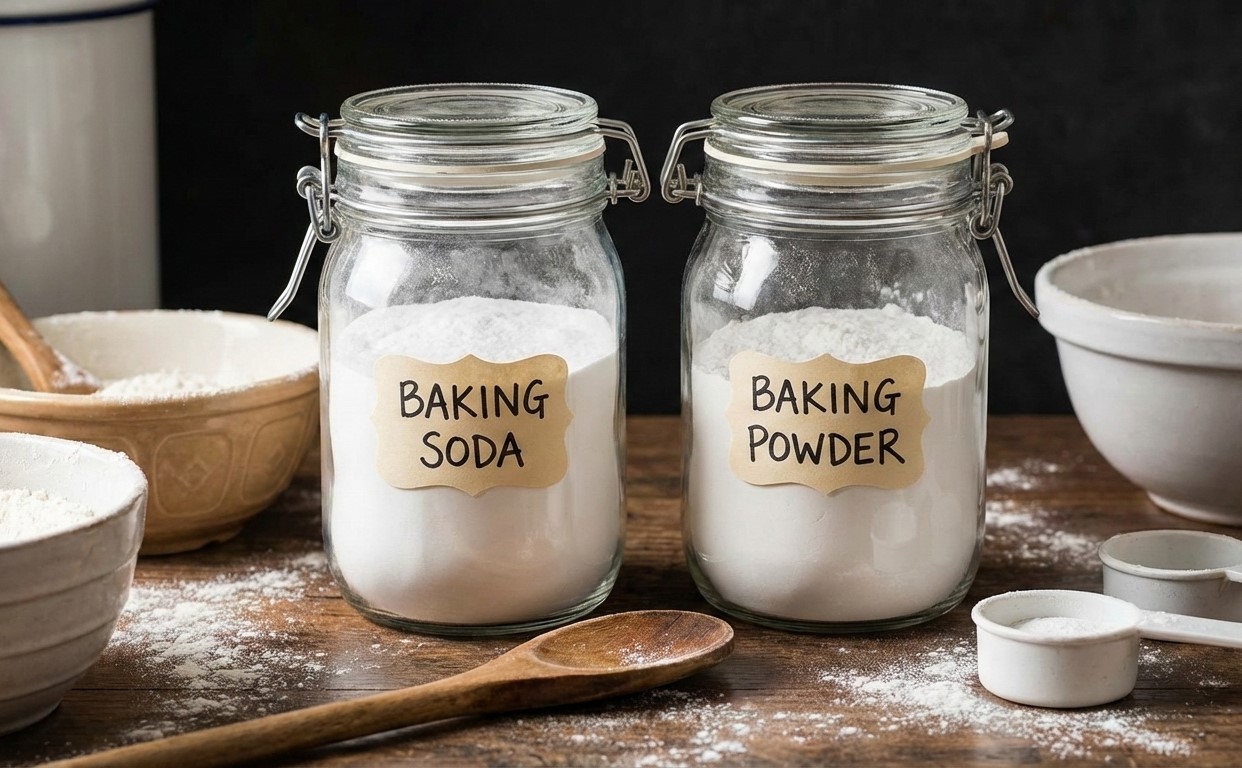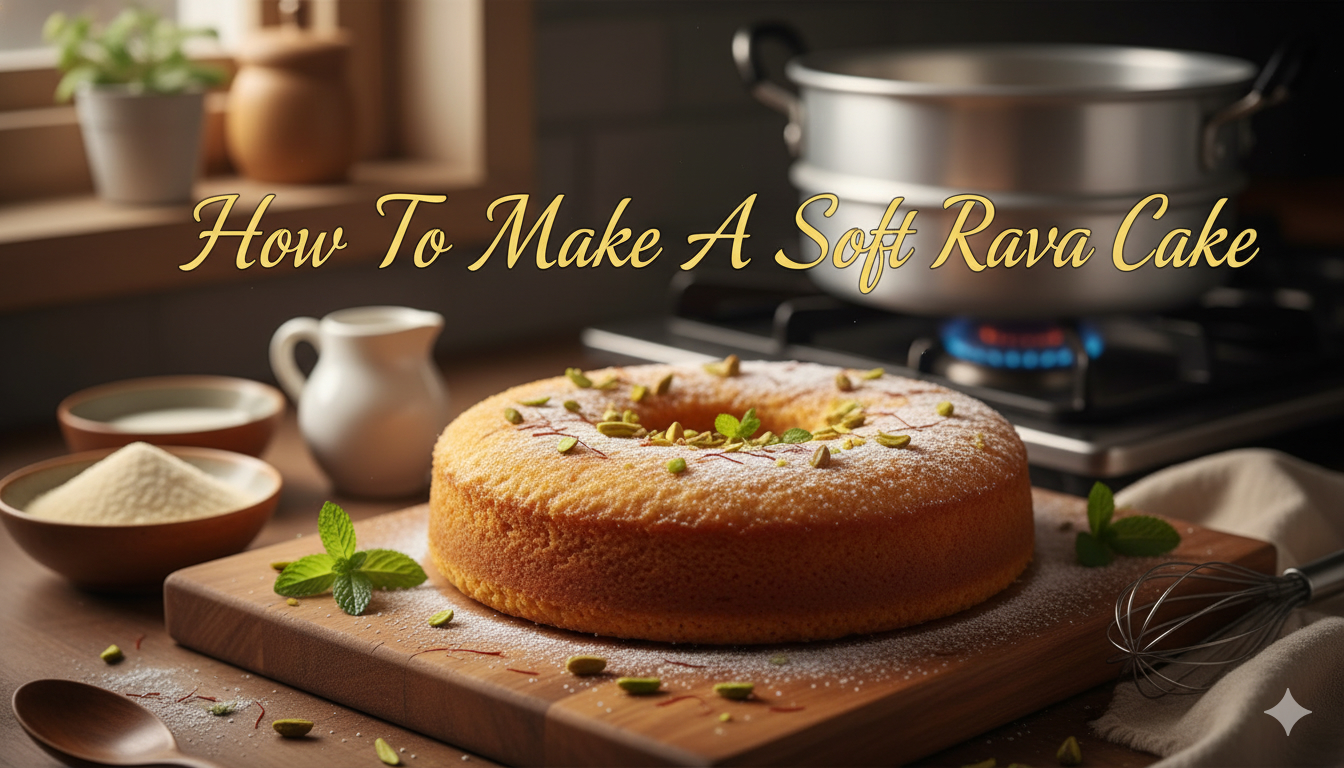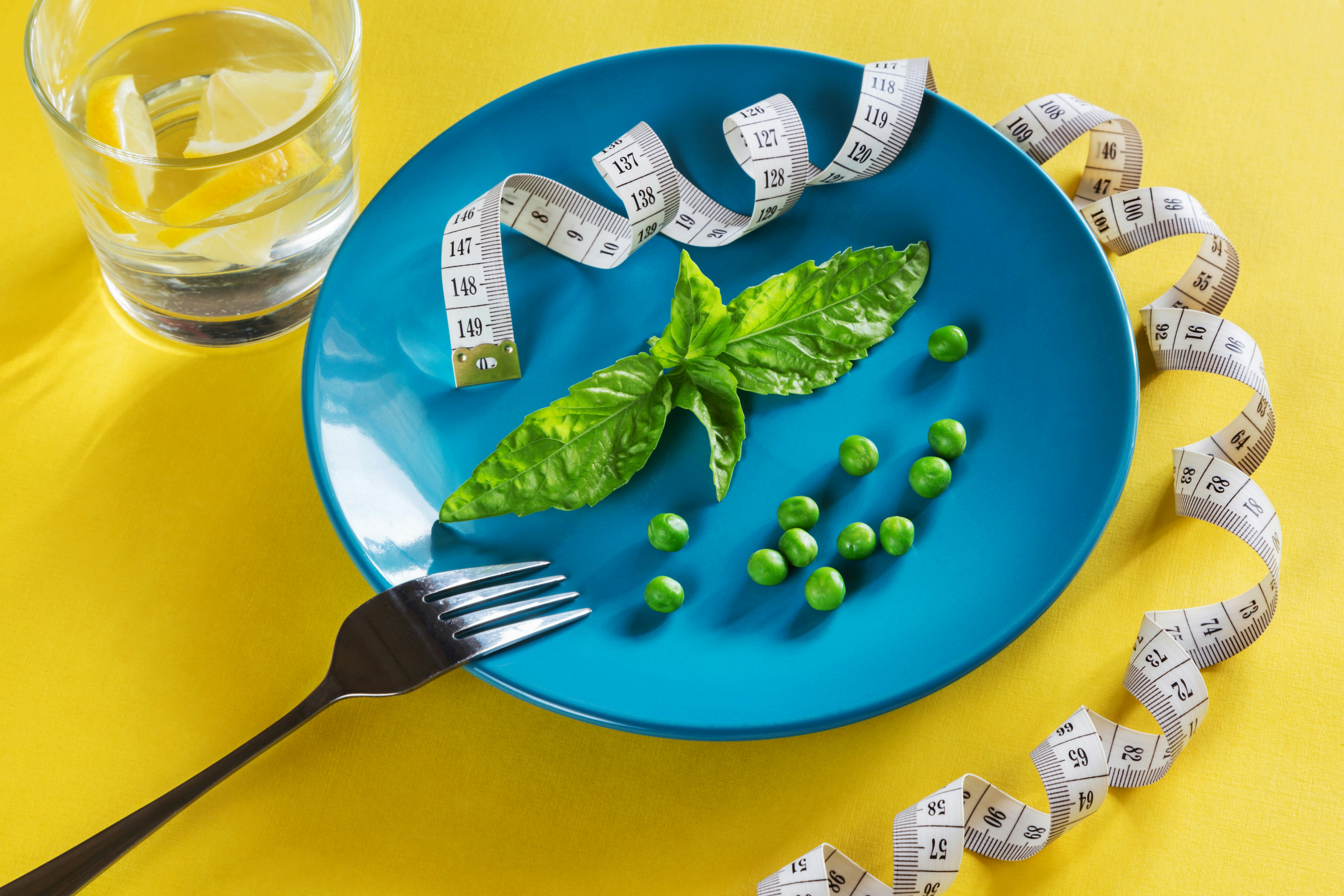At the height of Julia Child’s fame in the 1970s and ‘80s, Thanksgiving guests often felt the need to tell her she should get her home number removed from the public directory. (This was an analog tool called a “telephone book.”)“The phone would ring all day,” said Sheryl Julian, now the food editor for The Boston Globe, who celebrated Thanksgiving dinner in the Childs’ home in 1976 and 1977. “Every time she hung up, it would ring again, and it would be another total stranger with a turkey problem.”No matter how busy, Child would hand off whatever kitchen task she was doing, take the phone and talk the nervous cook down from the ledge. (This could be nerve-racking for guests, Julian said, who sometimes choked under the pressure of whisking a vinaigrette or topping and tailing green beans for the author of “Mastering the Art of French Cooking.”)
But Child refused to unlist her number or turn off the phone; instead, she embraced the role of national Thanksgiving commander-in-chief.“Whatever they seemed to be saying, she usually just told the callers not to worry,” Julian said. “I even heard her tell people that turkey wasn’t meant to be served hot. She just wanted them to relax.”This Thanksgiving scene illustrates details about Julia Child that have sometimes been forgotten since her death in 2004: that she remained entirely approachable even at the height of her fame; that she was famous as an expert in American home cooking as well as in French cuisine; and that she was not especially fussy about what people ate at home — even her own home.Child is now most famous for that magisterial first book, with its two weighty volumes and alarmingly detailed recipes; just preparing the ingredients for her cassoulet or ratatouille has driven more than one American home cook to drink. Many people today think of her as a rigorous enforcer of elite French cuisine.But, like most great hosts, she generally was very relaxed about cooking in her own home.“Her food was very good but very simple, and she used very little for seasoning except for salt and pepper,” Julian said. “You wouldn’t necessarily walk away thinking that was the best meal you ever had.”Even on Thanksgiving, she said, dinner was served at the big kitchen table, with guests stuffed elbow to elbow around its perimeter. Child put out Goldfish crackers, not foie gras or canapés, to nibble on with her favorite “reverse martini” cocktails: vermouth on the rocks with a floater of gin.And although Child devised a famously complicated “deconstructed” turkey to solve the eternal problem of white-meat-dark-meat cooking time, she usually roasted a whole bird, Norman Rockwell style, at 325 degrees until done. (She preferred an unstuffed turkey, to better control the cooking.)When Child and her husband, Paul, lived in France in the 1950s, they did not go to the great lengths then necessary to cook a traditional Thanksgiving meal, said Alex Prud’homme, Julia Child’s great-nephew, who helped write her memoir, “My Life in France,” just before she died. Eating turkey was still unheard of in France.“They would have oysters and Champagne and call it a night,” he said.But from the moment they returned to the United States and settled into a house and kitchen in Cambridge, Massachusetts, in 1961, Thanksgiving dinners at the Child house, say friends and family, were resolutely American, with classic dishes and unpretentious tastes.Even though she grew up in Pasadena, California, Child was a daughter of New England, with the patrician accent to prove it. (Her mother’s family line can be traced back to the Plymouth Colony.) Most of the holiday recipes she published reflect a fondness for Early American staples like oyster stuffing and pumpkins, adorned with extra butter and cream and frequently spiked with rum or whiskey.“I think of the late 1970s as the time that she starts getting away from being ‘The French Chef’ and embraces her American roots,” said Prud’homme, who is writing a book about this period in his great-aunt and uncle’s life.In the 1970s and ‘80s, she became a huge presence in the American mass media. When “The French Chef” ended in 1973, she expanded westward from her kitchen studio, renting a huge house near Santa Barbara, California, to cook with West Coast chefs like Wolfgang Puck and Bradley Ogden.For the first time, she wrote a book in her own voice (“From Julia Child’s Kitchen”). As she accumulated airtime on PBS, she also did regular food segments on “Good Morning America” and other shows, and wrote a column for Parade from 1982 to 1985, when the magazine had a circulation of almost 30 million.From her Thanksgiving columns over those few years, it is clear that her style was becoming less classically French and more worldly and speedy. She came up with a brilliant method of shaping two boneless turkey breasts and bread stuffing into a vast sandwich. Wrapped in turkey skin and cheesecloth and basted with butter, it becomes a golden, burnished roast that cooks in two hours and slices like a dream.By 1985, she was putting fresh garlic and ginger into her rutabaga gratin, serving broccoli and encouraging Thanksgiving cooks to buy premade mincemeat and “spiffy it up” into a spicy fruit sauce to pour over vanilla ice cream. That said, she never messed with her Aunt Helen’s pumpkin pie, with its subtle edge of molasses and bourbon.It was during a Thanksgiving cooking segment with Jacques Pépin on the “Tomorrow” show in 1978 that she cut a large slice out of her finger, just before going on camera to demonstrate how to remove the breasts from a whole bird. For a full-time cook, it wasn’t much of a cut, but the horrified reaction of the host, Tom Snyder, to her bleeding hand made for dramatic live television.The episode was quickly parodied on “Saturday Night Live,” with Dan Aykroyd playing Julia Child. (He has said it was easy, having grown up watching her show and eating her recipes; his aunt, Helen Gougeon, a popular food columnist in Toronto in the 1960s, is sometimes called “the Julia Child of Canada.”)“Julia liked nothing better than handling a whole animal on camera,” said Geoffrey Drummond, who directed many of her later shows, like “Baking With Julia.” “She had a great sense of drama, and with her size and her knife skills, she could really take almost anything apart.”This was when turkeys and chickens were the only whole animals American home cooks regularly confronted, and the skills of deboning a bird or breaking down a suckling pig were rare even among restaurant chefs. “Using the whole animal, nose to tail, is another idea Julia brought to America before its time,” Drummond said.She wore her knowledge lightly, and hoped others would do the same.In 1982, she spoke in an interview about the profound power of good simple meals, especially applicable to a family gathering like Thanksgiving.“A meal doesn’t have to be like a painting by Raphael, but it should be a serious and beautiful thing, no matter how simple,” she said. “What nicer way for a family to get together and communicate? Which is what life is all about, really.”———Stuffed Boneless Turkey Breast With White Wine GravyTime: 3 hours Yield: 12 to 16 servingsIngredients:For the Turkey and Stuffing:1 whole bone-in turkey breast, 10 to 14 poundsSalt and ground black pepper4 to 8 ounces unsalted butter1 recipe any bread stuffing1 onion, roughly chopped1 carrot, roughly choppedFor the Gravy:Turkey stock1/4 cup all-purpose flour1 cup white wine or vermouth, or additional stockPreparation:1. Bone the turkey breast: Pull off the skin in one piece, using your fingers to separate the skin from the meat. Turn the breast on one side and use the tip of a sharp knife to carve off the breast in one piece, following the curve of the rib cage. Repeat on the other side. Reserve whole breasts and skin. Alternatively, ask the butcher to do the boning for you.2. Place breastbone and any scraps in a deep pot and cover with cold water. Add about 1 teaspoon salt, bring to a simmer and simmer gently, uncovered, until stock is reduced and flavorful, 1 1/2 to 2 hours. Skim occasionally; do not boil. Let stock cool slightly, then strain, discard bones and reserve.3.Assemble and cook the roast: Heat oven to 325 degrees and place rack in lower third of oven. Cut a piece of cheesecloth long enough to leave about 8 inches of overhang at each end of the roasting pan; you will twist and tie these together to secure the roast.4. Melt 4 tablespoons of the butter in a saucepan or microwave. Dip cheesecloth in butter, shake off excess and lay out in roasting pan. Spread out the turkey skin, outer side down, on the cloth.5. Season turkey breasts with salt and pepper and paint with melted butter. Place one breast, cut side up, in the center of the cloth. Spoon 1/3 to 1/2 of the stuffing over the meat in a neat layer. (Set aside remaining stuffing in a casserole to bake separately.)6. Top stuffing with the second breast, cut side down, arranging it so that the thick end of the top breast drapes over the tapered end of the bottom one. (This will give the roast an even shape.)7. Lift one end of the skin up and over the roast. Repeat on the other side, so that the skin completely covers the roast. Repeat with the cheesecloth so the sides of the roast are covered.8. Bring up both ends of the cheesecloth so that they meet on top. Twist tightly and tie them together to secure. Turn roast over so that the ends of the cheesecloth are tucked underneath the roast. Slip a rack under the roast to lift it away from the bottom of the pan. Paint again with melted butter and strew onion and carrot around the roast.9. Bake until a meat thermometer inserted into the thickest part of the breast reads 155 degrees, about 2 hours depending on size. Baste every 20 to 30 minutes, first using melted butter, then the fat that collects in the pan.10. After 1 hour of cooking, cover stuffing in casserole with foil and place in the oven with the turkey. Uncover after 30 minutes and cook until heated through and crusty on top.11. When done, the roast will be compact and burnished brown. Remove to a platter and let rest, uncovered, 20 minutes. Cut the cheesecloth along one edge of the roast, then carefully peel it off. Gently lift roast and pull the cheesecloth away from the underside. Cover lightly with foil and return to turned-off oven to keep warm. Stuffing can also remain, covered, in turned-off oven.12. Make the gravy: Heat 3 cups reserved turkey stock. Pour 1/4 cup of the fat from the roasting pan into a large saucepan. (Reserve roasting pan with vegetables separately.) Heat over low heat until bubbling; add flour and cook, whisking, until lightly browned. Turn off heat, let cool 2 minutes, then gradually whisk in 2 cups hot stock. Pour off and discard any additional fat in roasting pan and place on top of the stove over low heat. Pour in wine, vermouth or more stock and cook, scraping up browned bits from the bottom of the pan, for 5 minutes. Pour contents of roasting pan into the gravy in the saucepan and stir together. Simmer until thickened and heated through. Add remaining stock as needed until gravy has the consistency you like. Taste for seasoning; strain.13. To carve the roast, cut it into 1/2-inch thick slices. Serve with additional stuffing and hot gravy.———Julia Child’s Aunt Helen’s Fluffy Pumpkin PieTime: 2 hours Yield: Two 9-inch pies or one 11-inch pie, 16 to 20 servingsIngredients:4 eggs2 15-ounce cans (3 1/2 cups) pumpkin purée1 cup light brown sugar1 cup plus 2 tablespoons sugarKosher salt3 tablespoons molasses3 tablespoons bourbon or dark rum (optional)3 teaspoons cinnamon3 teaspoons ginger1/4 teaspoon nutmeg1/4 teaspoon cloves1 cup heavy cream3/4 cup milk, more as neededTwo unbaked 9-inch pie shells or one 11-inch pie shellPreparation:1. Heat oven to 450 degrees and place rack in center of oven. Separate eggs and set aside.2. Using a mixer, blender or large bowl, blend pumpkin, the 2 cups of the sugars, 1 teaspoon salt, molasses, bourbon or rum (if using), cinnamon, ginger, nutmeg, cloves, egg yolks, cream and milk until smooth. Add more milk, a tablespoon at a time, if the mixture is stiff: it should be a soft purée.3. In a clean bowl, whip egg whites until foaming. Whip in a pinch of salt, then gradually whip in remaining 2 tablespoons sugar until shiny white peaks form. Beat 1/4 of the whites thoroughly into pumpkin mixture; gently fold in the rest.4. Immediately ladle filling into the shells, filling to just below the rim of the pan. Place in oven and bake just until rim of crust begins to turn gold, 10 to 15 minutes. Reduce heat to 375 and bake another 25 to 30 minutes, until a tester inserted into the filling 2 inches from the rim comes out clean. (The center should still be a bit wet; it will cook more as it cools.) If the rim of the crust starts to get too brown, cover it with aluminum foil.5. Immediately turn oven off, leave door ajar (stick in a wooden spoon to hold it open if necessary) and let sit 20 to 30 minutes more as the oven cools; this will prevent the filling from turning watery. Serve warm, or let cool, wrap tightly and refrigerate for up to 2 days. Let pie come to room temperature before serving.———Spicy Dried Fruit Dessert SauceTime: About 1 day Yield: 2 cupsIngredients:For the Minced Dried Fruit:1 tart apple, peeled and cored4 ounces golden raisins3 ounces dark brown sugar2 ounces prunes or dried figs, coarsely chopped2 ounces walnut or pecan halves1 ounces dried cherries1 ounce cold butter, cut into pieces1/2 ounce crystallized ginger, coarsely chopped1/4 cup brandy, like Cognac or Calvados1 lemon, zested and juiced1/2 teaspoon freshly grated nutmeg1/4 teaspoon freshly ground allspice1/4 teaspoon freshly ground cloveTo Finish the Sauce:Dark rum, apple cider or orange juiceBlack pepper to taste1 to 2 tablespoons cold unsalted butter (optional)Preparation:1. Combine all ingredients except those to finish the sauce in a food processor and pulse until coarsely chopped; do not pureé. Transfer to an airtight container and let rest at least 1 day, or up to 4 weeks.2. When ready to serve, transfer to a saucepan and add enough rum or other liquid to loosen. Heat until warm and bubbly. If desired, add black pepper to make the mixture more spicy. To make a richer sauce, whisk in cold butter 1 tablespoon at a time, to taste.3. Serve warm over ice cream, pumpkin pie or baked apples.———Sherry Vinegar-Glazed OnionsTime: 45 minutes Yield: 6 to 8 servingsIngredients:2 tablespoons neutral oil, like canola or grapeseed1 pound small peeled onions, about 1 inch in diameter, red or white or a combination (frozen onions are fine)1/2 cup sherry vinegar or apple cider vinegarSalt and ground black pepper to tasteHoney or maple syrup to tasteFinely minced parsley, for serving (optional)Preparation:1. In a wide skillet with a lid, heat oil over medium heat until bubbling. Add onions and sauté over medium-low heat for about 10 minutes, gently rolling the onions about so they will brown as evenly as possible.2. Pour in vinegar and 1/4 cup water. Season with salt and a few grinds of pepper. Cover and simmer very gently until onions are perfectly tender but retain their shape. Start testing with a thin sharp knife after 15 minutes; depending on size, the onions may cook in 15 to 25 minutes. (Frozen onions will cook faster.) Taste one to make sure it is completely tender all the way through; do not undercook.3. Using a slotted spoon, transfer onions to a serving bowl. (Onions may be prepared up to this point 2 days ahead. Reserve onions and cooking liquid separately. Reheat onions in reserved liquid, adding water as needed, then transfer them to a bowl.)4. Raise heat and boil liquid to reduce it to a thick glaze. Taste and add salt, pepper and sweetener to taste. Stir in parsley and serve hot or warm.© 2015 New York Times News Service
But Child refused to unlist her number or turn off the phone; instead, she embraced the role of national Thanksgiving commander-in-chief.“Whatever they seemed to be saying, she usually just told the callers not to worry,” Julian said. “I even heard her tell people that turkey wasn’t meant to be served hot. She just wanted them to relax.”This Thanksgiving scene illustrates details about Julia Child that have sometimes been forgotten since her death in 2004: that she remained entirely approachable even at the height of her fame; that she was famous as an expert in American home cooking as well as in French cuisine; and that she was not especially fussy about what people ate at home — even her own home.Child is now most famous for that magisterial first book, with its two weighty volumes and alarmingly detailed recipes; just preparing the ingredients for her cassoulet or ratatouille has driven more than one American home cook to drink. Many people today think of her as a rigorous enforcer of elite French cuisine.But, like most great hosts, she generally was very relaxed about cooking in her own home.“Her food was very good but very simple, and she used very little for seasoning except for salt and pepper,” Julian said. “You wouldn’t necessarily walk away thinking that was the best meal you ever had.”Even on Thanksgiving, she said, dinner was served at the big kitchen table, with guests stuffed elbow to elbow around its perimeter. Child put out Goldfish crackers, not foie gras or canapés, to nibble on with her favorite “reverse martini” cocktails: vermouth on the rocks with a floater of gin.And although Child devised a famously complicated “deconstructed” turkey to solve the eternal problem of white-meat-dark-meat cooking time, she usually roasted a whole bird, Norman Rockwell style, at 325 degrees until done. (She preferred an unstuffed turkey, to better control the cooking.)When Child and her husband, Paul, lived in France in the 1950s, they did not go to the great lengths then necessary to cook a traditional Thanksgiving meal, said Alex Prud’homme, Julia Child’s great-nephew, who helped write her memoir, “My Life in France,” just before she died. Eating turkey was still unheard of in France.“They would have oysters and Champagne and call it a night,” he said.But from the moment they returned to the United States and settled into a house and kitchen in Cambridge, Massachusetts, in 1961, Thanksgiving dinners at the Child house, say friends and family, were resolutely American, with classic dishes and unpretentious tastes.Even though she grew up in Pasadena, California, Child was a daughter of New England, with the patrician accent to prove it. (Her mother’s family line can be traced back to the Plymouth Colony.) Most of the holiday recipes she published reflect a fondness for Early American staples like oyster stuffing and pumpkins, adorned with extra butter and cream and frequently spiked with rum or whiskey.“I think of the late 1970s as the time that she starts getting away from being ‘The French Chef’ and embraces her American roots,” said Prud’homme, who is writing a book about this period in his great-aunt and uncle’s life.In the 1970s and ‘80s, she became a huge presence in the American mass media. When “The French Chef” ended in 1973, she expanded westward from her kitchen studio, renting a huge house near Santa Barbara, California, to cook with West Coast chefs like Wolfgang Puck and Bradley Ogden.For the first time, she wrote a book in her own voice (“From Julia Child’s Kitchen”). As she accumulated airtime on PBS, she also did regular food segments on “Good Morning America” and other shows, and wrote a column for Parade from 1982 to 1985, when the magazine had a circulation of almost 30 million.From her Thanksgiving columns over those few years, it is clear that her style was becoming less classically French and more worldly and speedy. She came up with a brilliant method of shaping two boneless turkey breasts and bread stuffing into a vast sandwich. Wrapped in turkey skin and cheesecloth and basted with butter, it becomes a golden, burnished roast that cooks in two hours and slices like a dream.By 1985, she was putting fresh garlic and ginger into her rutabaga gratin, serving broccoli and encouraging Thanksgiving cooks to buy premade mincemeat and “spiffy it up” into a spicy fruit sauce to pour over vanilla ice cream. That said, she never messed with her Aunt Helen’s pumpkin pie, with its subtle edge of molasses and bourbon.It was during a Thanksgiving cooking segment with Jacques Pépin on the “Tomorrow” show in 1978 that she cut a large slice out of her finger, just before going on camera to demonstrate how to remove the breasts from a whole bird. For a full-time cook, it wasn’t much of a cut, but the horrified reaction of the host, Tom Snyder, to her bleeding hand made for dramatic live television.The episode was quickly parodied on “Saturday Night Live,” with Dan Aykroyd playing Julia Child. (He has said it was easy, having grown up watching her show and eating her recipes; his aunt, Helen Gougeon, a popular food columnist in Toronto in the 1960s, is sometimes called “the Julia Child of Canada.”)“Julia liked nothing better than handling a whole animal on camera,” said Geoffrey Drummond, who directed many of her later shows, like “Baking With Julia.” “She had a great sense of drama, and with her size and her knife skills, she could really take almost anything apart.”This was when turkeys and chickens were the only whole animals American home cooks regularly confronted, and the skills of deboning a bird or breaking down a suckling pig were rare even among restaurant chefs. “Using the whole animal, nose to tail, is another idea Julia brought to America before its time,” Drummond said.She wore her knowledge lightly, and hoped others would do the same.In 1982, she spoke in an interview about the profound power of good simple meals, especially applicable to a family gathering like Thanksgiving.“A meal doesn’t have to be like a painting by Raphael, but it should be a serious and beautiful thing, no matter how simple,” she said. “What nicer way for a family to get together and communicate? Which is what life is all about, really.”———Stuffed Boneless Turkey Breast With White Wine GravyTime: 3 hours Yield: 12 to 16 servingsIngredients:For the Turkey and Stuffing:1 whole bone-in turkey breast, 10 to 14 poundsSalt and ground black pepper4 to 8 ounces unsalted butter1 recipe any bread stuffing1 onion, roughly chopped1 carrot, roughly choppedFor the Gravy:Turkey stock1/4 cup all-purpose flour1 cup white wine or vermouth, or additional stockPreparation:1. Bone the turkey breast: Pull off the skin in one piece, using your fingers to separate the skin from the meat. Turn the breast on one side and use the tip of a sharp knife to carve off the breast in one piece, following the curve of the rib cage. Repeat on the other side. Reserve whole breasts and skin. Alternatively, ask the butcher to do the boning for you.2. Place breastbone and any scraps in a deep pot and cover with cold water. Add about 1 teaspoon salt, bring to a simmer and simmer gently, uncovered, until stock is reduced and flavorful, 1 1/2 to 2 hours. Skim occasionally; do not boil. Let stock cool slightly, then strain, discard bones and reserve.3.Assemble and cook the roast: Heat oven to 325 degrees and place rack in lower third of oven. Cut a piece of cheesecloth long enough to leave about 8 inches of overhang at each end of the roasting pan; you will twist and tie these together to secure the roast.4. Melt 4 tablespoons of the butter in a saucepan or microwave. Dip cheesecloth in butter, shake off excess and lay out in roasting pan. Spread out the turkey skin, outer side down, on the cloth.5. Season turkey breasts with salt and pepper and paint with melted butter. Place one breast, cut side up, in the center of the cloth. Spoon 1/3 to 1/2 of the stuffing over the meat in a neat layer. (Set aside remaining stuffing in a casserole to bake separately.)6. Top stuffing with the second breast, cut side down, arranging it so that the thick end of the top breast drapes over the tapered end of the bottom one. (This will give the roast an even shape.)7. Lift one end of the skin up and over the roast. Repeat on the other side, so that the skin completely covers the roast. Repeat with the cheesecloth so the sides of the roast are covered.8. Bring up both ends of the cheesecloth so that they meet on top. Twist tightly and tie them together to secure. Turn roast over so that the ends of the cheesecloth are tucked underneath the roast. Slip a rack under the roast to lift it away from the bottom of the pan. Paint again with melted butter and strew onion and carrot around the roast.9. Bake until a meat thermometer inserted into the thickest part of the breast reads 155 degrees, about 2 hours depending on size. Baste every 20 to 30 minutes, first using melted butter, then the fat that collects in the pan.10. After 1 hour of cooking, cover stuffing in casserole with foil and place in the oven with the turkey. Uncover after 30 minutes and cook until heated through and crusty on top.11. When done, the roast will be compact and burnished brown. Remove to a platter and let rest, uncovered, 20 minutes. Cut the cheesecloth along one edge of the roast, then carefully peel it off. Gently lift roast and pull the cheesecloth away from the underside. Cover lightly with foil and return to turned-off oven to keep warm. Stuffing can also remain, covered, in turned-off oven.12. Make the gravy: Heat 3 cups reserved turkey stock. Pour 1/4 cup of the fat from the roasting pan into a large saucepan. (Reserve roasting pan with vegetables separately.) Heat over low heat until bubbling; add flour and cook, whisking, until lightly browned. Turn off heat, let cool 2 minutes, then gradually whisk in 2 cups hot stock. Pour off and discard any additional fat in roasting pan and place on top of the stove over low heat. Pour in wine, vermouth or more stock and cook, scraping up browned bits from the bottom of the pan, for 5 minutes. Pour contents of roasting pan into the gravy in the saucepan and stir together. Simmer until thickened and heated through. Add remaining stock as needed until gravy has the consistency you like. Taste for seasoning; strain.13. To carve the roast, cut it into 1/2-inch thick slices. Serve with additional stuffing and hot gravy.———Julia Child’s Aunt Helen’s Fluffy Pumpkin PieTime: 2 hours Yield: Two 9-inch pies or one 11-inch pie, 16 to 20 servingsIngredients:4 eggs2 15-ounce cans (3 1/2 cups) pumpkin purée1 cup light brown sugar1 cup plus 2 tablespoons sugarKosher salt3 tablespoons molasses3 tablespoons bourbon or dark rum (optional)3 teaspoons cinnamon3 teaspoons ginger1/4 teaspoon nutmeg1/4 teaspoon cloves1 cup heavy cream3/4 cup milk, more as neededTwo unbaked 9-inch pie shells or one 11-inch pie shellPreparation:1. Heat oven to 450 degrees and place rack in center of oven. Separate eggs and set aside.2. Using a mixer, blender or large bowl, blend pumpkin, the 2 cups of the sugars, 1 teaspoon salt, molasses, bourbon or rum (if using), cinnamon, ginger, nutmeg, cloves, egg yolks, cream and milk until smooth. Add more milk, a tablespoon at a time, if the mixture is stiff: it should be a soft purée.3. In a clean bowl, whip egg whites until foaming. Whip in a pinch of salt, then gradually whip in remaining 2 tablespoons sugar until shiny white peaks form. Beat 1/4 of the whites thoroughly into pumpkin mixture; gently fold in the rest.4. Immediately ladle filling into the shells, filling to just below the rim of the pan. Place in oven and bake just until rim of crust begins to turn gold, 10 to 15 minutes. Reduce heat to 375 and bake another 25 to 30 minutes, until a tester inserted into the filling 2 inches from the rim comes out clean. (The center should still be a bit wet; it will cook more as it cools.) If the rim of the crust starts to get too brown, cover it with aluminum foil.5. Immediately turn oven off, leave door ajar (stick in a wooden spoon to hold it open if necessary) and let sit 20 to 30 minutes more as the oven cools; this will prevent the filling from turning watery. Serve warm, or let cool, wrap tightly and refrigerate for up to 2 days. Let pie come to room temperature before serving.———Spicy Dried Fruit Dessert SauceTime: About 1 day Yield: 2 cupsIngredients:For the Minced Dried Fruit:1 tart apple, peeled and cored4 ounces golden raisins3 ounces dark brown sugar2 ounces prunes or dried figs, coarsely chopped2 ounces walnut or pecan halves1 ounces dried cherries1 ounce cold butter, cut into pieces1/2 ounce crystallized ginger, coarsely chopped1/4 cup brandy, like Cognac or Calvados1 lemon, zested and juiced1/2 teaspoon freshly grated nutmeg1/4 teaspoon freshly ground allspice1/4 teaspoon freshly ground cloveTo Finish the Sauce:Dark rum, apple cider or orange juiceBlack pepper to taste1 to 2 tablespoons cold unsalted butter (optional)Preparation:1. Combine all ingredients except those to finish the sauce in a food processor and pulse until coarsely chopped; do not pureé. Transfer to an airtight container and let rest at least 1 day, or up to 4 weeks.2. When ready to serve, transfer to a saucepan and add enough rum or other liquid to loosen. Heat until warm and bubbly. If desired, add black pepper to make the mixture more spicy. To make a richer sauce, whisk in cold butter 1 tablespoon at a time, to taste.3. Serve warm over ice cream, pumpkin pie or baked apples.———Sherry Vinegar-Glazed OnionsTime: 45 minutes Yield: 6 to 8 servingsIngredients:2 tablespoons neutral oil, like canola or grapeseed1 pound small peeled onions, about 1 inch in diameter, red or white or a combination (frozen onions are fine)1/2 cup sherry vinegar or apple cider vinegarSalt and ground black pepper to tasteHoney or maple syrup to tasteFinely minced parsley, for serving (optional)Preparation:1. In a wide skillet with a lid, heat oil over medium heat until bubbling. Add onions and sauté over medium-low heat for about 10 minutes, gently rolling the onions about so they will brown as evenly as possible.2. Pour in vinegar and 1/4 cup water. Season with salt and a few grinds of pepper. Cover and simmer very gently until onions are perfectly tender but retain their shape. Start testing with a thin sharp knife after 15 minutes; depending on size, the onions may cook in 15 to 25 minutes. (Frozen onions will cook faster.) Taste one to make sure it is completely tender all the way through; do not undercook.3. Using a slotted spoon, transfer onions to a serving bowl. (Onions may be prepared up to this point 2 days ahead. Reserve onions and cooking liquid separately. Reheat onions in reserved liquid, adding water as needed, then transfer them to a bowl.)4. Raise heat and boil liquid to reduce it to a thick glaze. Taste and add salt, pepper and sweetener to taste. Stir in parsley and serve hot or warm.© 2015 New York Times News Service
Advertisement
For the latest food news, health tips and recipes, like us on Facebook or follow us on Twitter and YouTube.
Tags:














